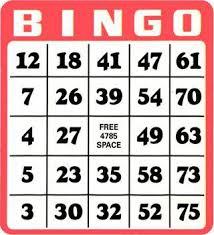
Nothing can throw a monkey wrench into the alignment of sales and marketing efforts like the lack of common terms we use all the time like ; “leads” , “inquires” and “prospects” .
Nothing drives team members back to the safety of their silo’s of ;” I did my job” quicker than a lack of common language when it comes to what everyone refers to as “ leads”.
We also see frustration that results in tarnished relationships when the manufacturer / supplier lack a common lead language with his or her channel partners, dealers, and distributors.
So to set the record straight I want to share what I have always taught my sales and marketing teams that reported to me over the years as well as my clients’ teams.
Leads
Simply put a lead is someone who has raised their hand, and basically expressed the following;
- I have a problem
- I think your product or service can solve my problem
- I have the ability to pay for your solution if it truly can solve my problem
A lead therefore is someone qualified to have a problem your product solves, they want the problem fixed, and they have the money to pay for it, or a way to pay for it.
Inquires (tire- kickers)
Inquires are people who have expressed an interest in your product. What we used to call “tire- kickers” back in the day. These are folks who walk by your booth like they were trick or treating and fill their show bag full of brochures. Or they surf the web in areas of interest and reach out (like a virtual trade show) and ask for brochures to be sent to them.
- they may or may not have a problem your product or service solves
- they are not sure if your product can help them , but they are interested in learning more
- they may or may not know the cost of your product or service
- they may or may not have the ability to pay for your product
- they are curious and may be shopping for a solution or just information for themselves and or someone else
They basically walked by, surfed by… and said; “cool…tell me more”. They did not say; “great, I want one, where do I send the check?”
Prospects
Prospects are those folks out there in your market that your product or service could help. Some know they have a problem that needs a solution, and some may not. Some may not even see the condition (problem) you solve as a problem, but just one more thing they have to live with.
- they may be aware they have a problem , or may not
- they may know your company and have a perception regarding your products and services and the problems they solve, or they may not
- they may have a perceived cost to fix their problems in mind, or they may not
- they do not currently buy from you , and they may be buying alternative solutions
Prospects often represent over 70% of any market and are often great resources for market information and determining unresolved problems as they discuss in the book Tuned In.
As you can imagine many discussions end in frustration that begin with; “I sent you 122 leads last week and you have not closed any of them.” Really? Were they truly “leads”, or were they “tire kickers” or were they simply “prospects”?
The key is Market leaders must develop a common understanding, a common language to insure relationship within their teams grow. If you work with a manufacturer who sends you “leads” or you are the manufacturer who sends “leads “ to channel partners you must define what this term means and the corresponding expectation.
If you are a Market leader, and your sales are a science and not an art, you understand the buyer, buying process and can clearly communicate the expectations of leads and inquires.
If you work with (for) a market loser, every inquiry that “fogs a contact us form” is a lead and is a potential sale you failed to close.
Market losers spend more time trying to; “Hold people accountable” ….their salespeople, their dealers, their channel partners and so on when they should be spending that time gaining an understanding of your buyers.
If you do not like my definitions it does not hurt my feelings. What is key is to clearly state what the terms thrown around in meetings truly mean and get everyone on the same page. Once you have a common language, you can work on building a perceived expectation for each term.
A common language is critical to clearly articulate where a buyer is in the buying process. A common language insures you, your partners, suppliers, and your salespeople have the right tools in place to keep the conversation moving to the next phase of the buying process so you can eventually close.
How about your team…do you have clearly defined definitions of the words like; Leads, inquires, and prospects?
Do you and your suppliers, your distributors have a common language?
Do you have a Market Loser calling you wanting to know why you have not closed “leads” when in reality they were just “inquires”?
I would value you sharing how your team defines a lead, inquiry, and or prospect.










